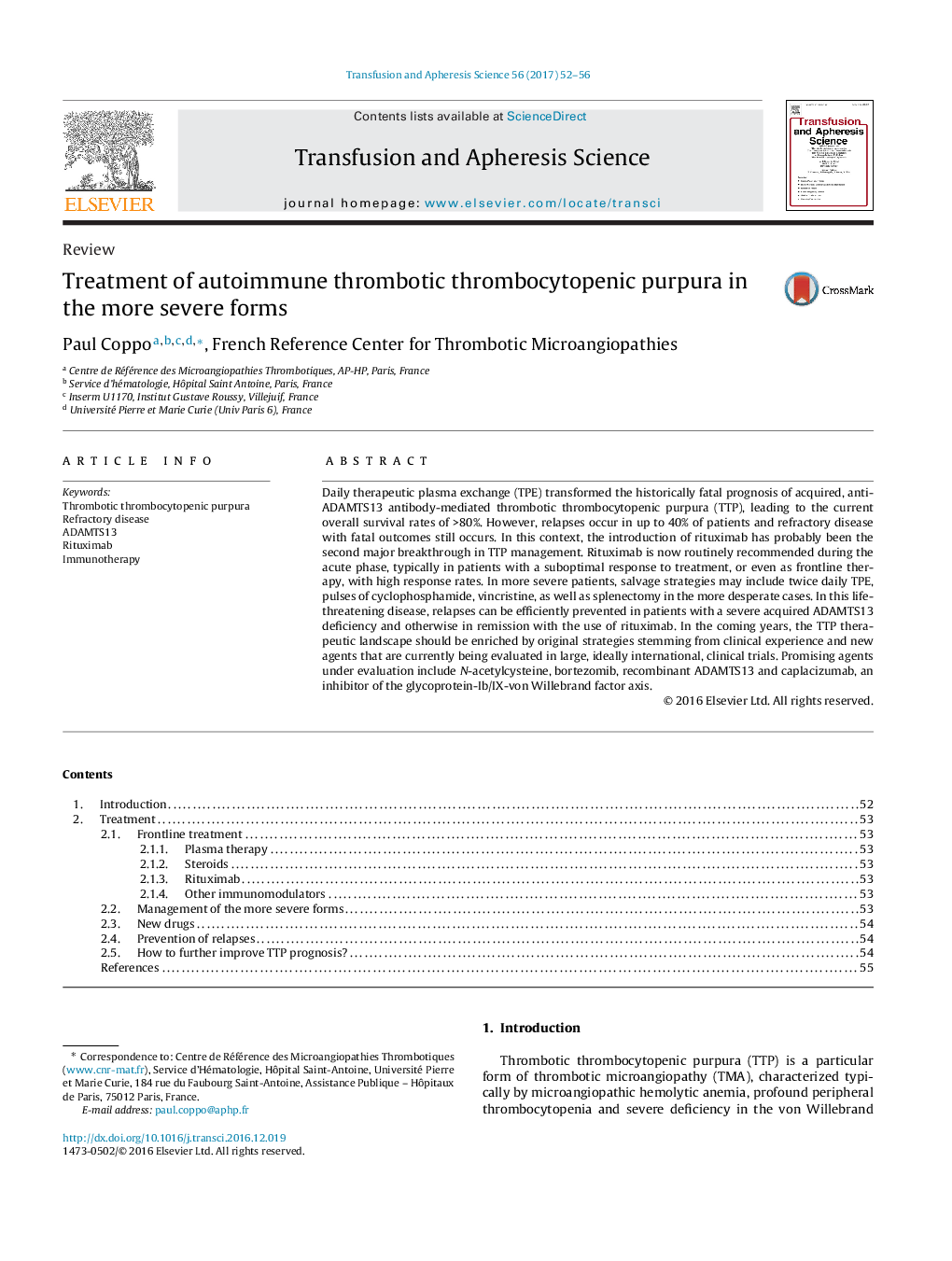| Article ID | Journal | Published Year | Pages | File Type |
|---|---|---|---|---|
| 5664576 | Transfusion and Apheresis Science | 2017 | 5 Pages |
Daily therapeutic plasma exchange (TPE) transformed the historically fatal prognosis of acquired, anti-ADAMTS13 antibody-mediated thrombotic thrombocytopenic purpura (TTP), leading to the current overall survival rates of >80%. However, relapses occur in up to 40% of patients and refractory disease with fatal outcomes still occurs. In this context, the introduction of rituximab has probably been the second major breakthrough in TTP management. Rituximab is now routinely recommended during the acute phase, typically in patients with a suboptimal response to treatment, or even as frontline therapy, with high response rates. In more severe patients, salvage strategies may include twice daily TPE, pulses of cyclophosphamide, vincristine, as well as splenectomy in the more desperate cases. In this life-threatening disease, relapses can be efficiently prevented in patients with a severe acquired ADAMTS13 deficiency and otherwise in remission with the use of rituximab. In the coming years, the TTP therapeutic landscape should be enriched by original strategies stemming from clinical experience and new agents that are currently being evaluated in large, ideally international, clinical trials. Promising agents under evaluation include N-acetylcysteine, bortezomib, recombinant ADAMTS13 and caplacizumab, an inhibitor of the glycoprotein-Ib/IX-von Willebrand factor axis.
